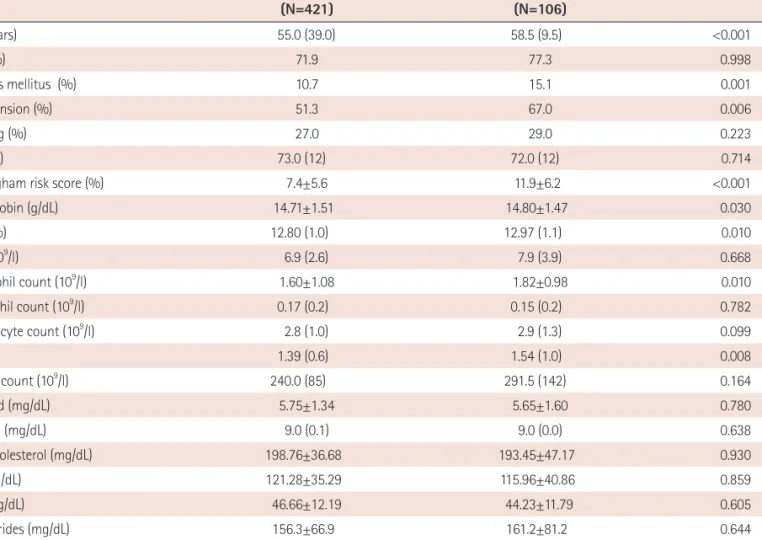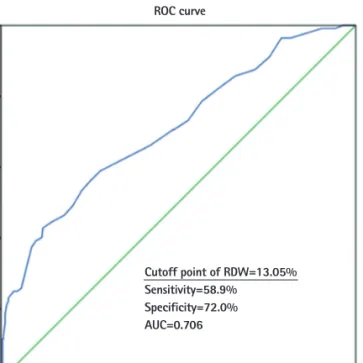Korean Circulation Journal
Introduction
The red blood cell distribution width (RDW), part of the standard
complete blood count, is a measure of the variability in circulating erythrocyte size that is often used in the differential diagnosis of anaemia.
1)Recently, the RDW was found to be associated with a poor prognosis and increased mortality rate in several cardiovascular diseases such as stable coronary heart disease,
2)heart failure,
3)and peripheral artery disease,
4)and also with some invasive cardiac procedures such as primary coronary intervention
5)and transcatheter aortic valve implantation.
6)The RDW is also elevated in some subclinical states of atherosclerosis, e.g., in patients with microalbuminuria, which is an independent predictor of cardiovascular (CV) events.
7)Computerized tomography (CT) can be used to calculate the coronary artery calcification score (CACS), which is a measure of the plaque burden in the coronary arteries.
The severity of coronary artery calcification (CAC) has been found to be a useful marker of atherosclerosis,
8)and is an independent
Print ISSN 1738-5520 • On-line ISSN 1738-5555
Association between Red Blood Cell Distribution Width and Coronary Artery Calcification in Patients Undergoing 64-Multidetector
Computed Tomography
Ozgul Malcok Gürel, MD 1 , Muhammed Bora Demircelik, MD 1 , Mukadder Ayse Bilgic, MD 2 , Hakki Yilmaz, MD 2 , Omer Caglar Yilmaz, MD 3 , Muzaffer Cakmak, MD 4 , and Beyhan Eryonucu, MD 1
1
Department of Cardiology,
2Department of Internal Medicine, Section of Nephrology, School of Medicine, Turgut Ozal University, Ankara,
3
Department of Cardiology, Ankara Occupational Diseases Hospital, Ankara,
4

